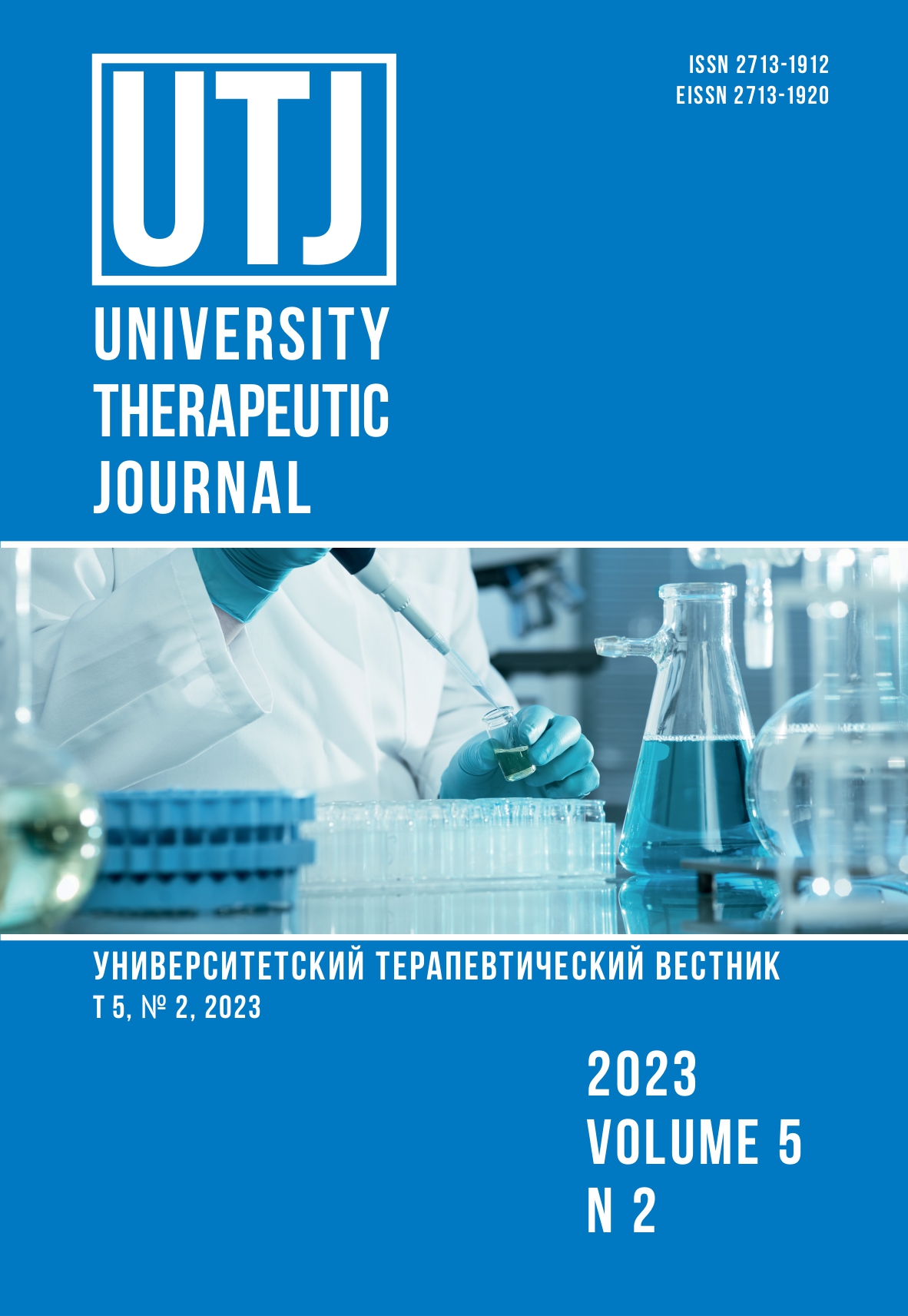FEATURES OF THE COMPLICATED COURSE AND EXTRAINTESTINAL MANIFESTATIONS OF INFLAMMATORY BOWEL DISEASES
Abstract
Introduction. Inflammatory bowel diseases (IBD) are an urgent problem of modern gastroenterology, the course of Crohn’s disease (CD), ulcerative colitis (UC) is characterized by progression and aggravation with continuous recurrence of the disease, with the development of extraintestinal manifestations and in the case of a complicated course. The aim of this study was to assess the prevalence of complications and extraintestinal manifestations of IBD in patients seeking specialized gastroenterological medical care. Materials and methods. The study was conducted on the basis of one of the two city centers of IBD in St. Petersburg (Elizavetinskaya hospital), the cross-sectional and retrospective study included data from 343 patients with IBD (CD — 166 patients, UC — 177 patients) who were admitted to this medical institution for the period 2020–2022. Results and discussion. Thus, in the study group of patients, the chronic recurrent course of IBD was predominant, extraintestinal manifestations were more common in CD (44%) compared with UC (25%). The structure of extraintestinal manifestations was dominated by peripheral arthropathy, more than a quarter of patients with extraintestinal manifestations had a combination of two or more extraintestinal manifestations. Complications of IBD at treatment were detected in 43% of patients with CD and in 32% of patients with UC, and in more than a quarter of patients with a complicated course, a combination of two or more complications was detected (the most common were anemia and malnutrition, as well as their combination). In the anamnesis non-life-threatening complications occurred at 58% of patients with CD and at 43% of patients with UC, lifethreatening complications — at 24% and at 9% of patients with CD and UC respectively. The structure of life-threatening complications of UC was dominated by cases of anemia that required blood transfusion (7% of the total number of patients with UC) and a combination of several life-threatening complications (2%). In CD, decompensated stricture of the intestine (10%), perforation of the intestine (6%), a combination of several life-threatening complications (6%) and anemia, which required blood transfusion (5%), prevailed. In 32% of patients, life-threatening complications developed before the diagnosis of IBD. After diagnosis, with the greatest frequency, life-threatening complications in CD developed in a four-year period from the diagnosis of the disease, for UC — within two years. As a result of the analysis of the relationships between the variant of the course of IBD (chronic continuous or chronic recurrent) and the presence of extraintestinal manifestations, a complicated course, the occurrence of life-threatening complications, statistically significant links were not revealed. Accordingly, the development of extraintestinal manifestations and complications was not associated with any cource of the disease.Results of the study were comparable with the results of a federal multicenter study ESCApe-2 (2013–2014) and the study of clinical features and therapy of IBD in St. Petersburg (2018–2020).


